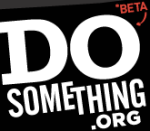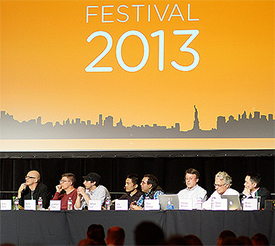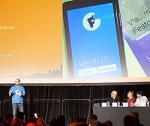 We hear inspiring stories of wealthy Americans who give back – through the Giving Pledge or interviews where they tell the background behind their generosity. We think: How nice. How different they are from us.
We hear inspiring stories of wealthy Americans who give back – through the Giving Pledge or interviews where they tell the background behind their generosity. We think: How nice. How different they are from us.
I’ll admit it. It bugs me that so much of what we hear about “philanthropy” is from those with tremendous wealth. But that makes sense, you say. They have the most to give.
Yet the statistics around giving tell a very different story.
In 2011, $298 billion was given to charity. You may already know that the vast majority of charitable donations comes from individuals—73%—with the remaining 17% culled from foundations, bequests and corporations combined.
But here’s the real story: Fully 74% of the total giving by individuals was offered by households with incomes of less than $200,000. That’s right. Working stiffs like us gave $162 billion. Shockingly, families making less than $50,000 gave 37% of that amount.
I truly admire the Buffett and Gates’ families for their business acumen and for the amazing examples they set for large-scale strategic philanthropy. What I wonder is: Why are their stories the only ones we hear? Despite all their wealth, the Gates’ and Buffetts are not contributing the majority of funding to nonprofits. We are.
Dec. 3 is Giving Tuesday, a chance for us to share our stories. It’s also a chance for us to celebrate the fact that each of us—really—can make a difference. Statistically, it’s exactly people like us who are making that difference.
Imagine joining with others who care about the same issues and giving together. Wonderful organizations like this exist for funding women and girls, such as Women Moving Millions (whose CEO, Jacki Zehner, serves on our advisory board), Women Donors Network, and many local groups like Impact 100. But say your interest is poverty or environment or youth development or health. Or maybe you don’t give $100,000 or $5,000 or $1,000 each year focused on women and girls.
Say you’d like to give a bit less or you’re still learning what will be your big issue. You want to explore what’s out there, but you’d also like to learn as part of a community.
This is really what Giving Tuesday is all about. At Catalytic Women we wanted to be part of this incredible movement to offer a new way of giving in 2013: one that allows a woman to give at any level, to share her story as part of a giving community, to enjoy learning and helping, to make an impact with friends, and to change the world … maybe with just a bit more than pocket change.
So this Giving Tuesday, I challenge you to brag that you really do have enough to make a difference. Share your story with others. Connect with friends—new or old—over the change you want to make in the world. And then, give together and make that change. Each of us really can make a big impact with not-so-big dollars.
Giving Tuesday has inspired us to launch online Giving Circles, where you can join with others to learn about issues and then, as a group, fund nonprofits doing that work. It’s easy, social, fun and high-impact.
Contrary to what we may be told by the media, your story and my story are the ones that create global change. Giving Tuesday is a day to celebrate ordinary people funding extraordinary work. I mean that as the highest compliment. Let’s change how we talk about our impact. Let’s own it.
It’s time to disrupt philanthropy. Care to join me?
 As CEO and Founder of Catalytic Women, Melanie Hamburger is passionate about making giving accessible. She believes in the power of women’s financial influence, especially in bringing values to the way we use money. Her vision is to mobilize billions more dollars towards solving social issues by democratizing the way we give and inspiring people to give now, at any level.
As CEO and Founder of Catalytic Women, Melanie Hamburger is passionate about making giving accessible. She believes in the power of women’s financial influence, especially in bringing values to the way we use money. Her vision is to mobilize billions more dollars towards solving social issues by democratizing the way we give and inspiring people to give now, at any level.


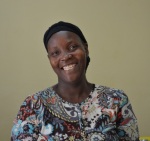
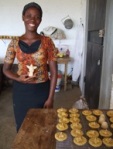





 Women Investing in Women (
Women Investing in Women (